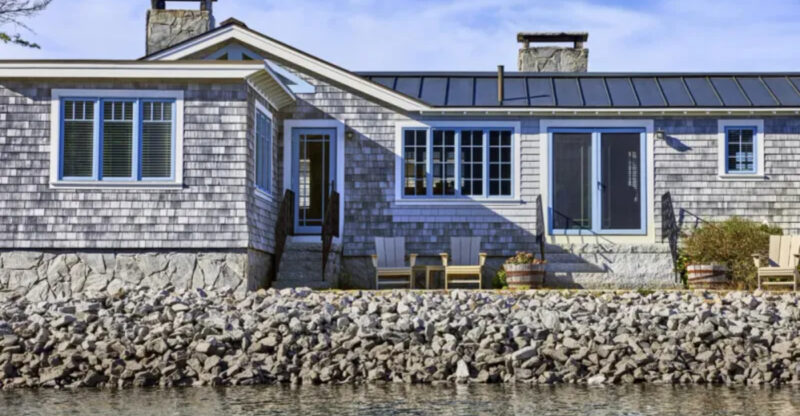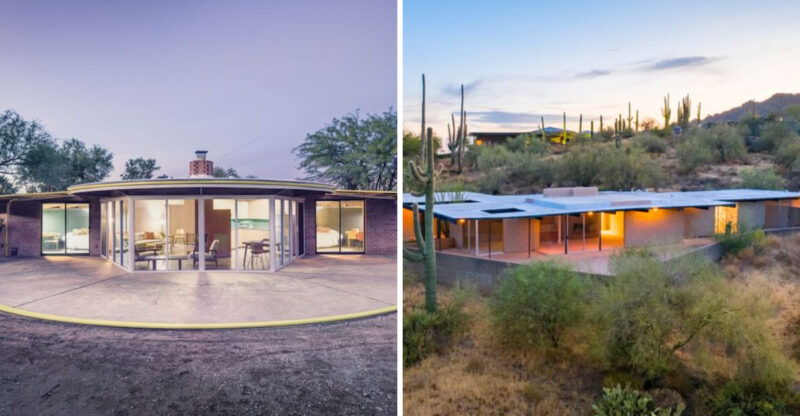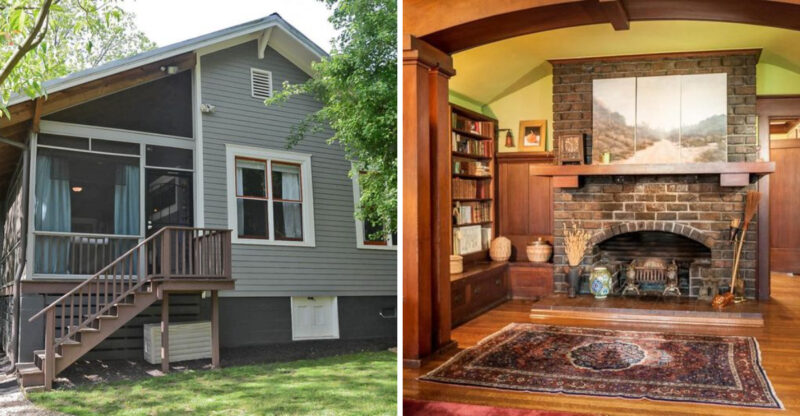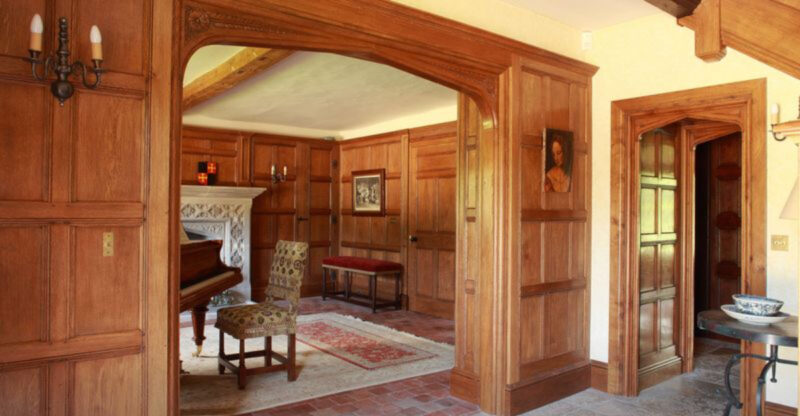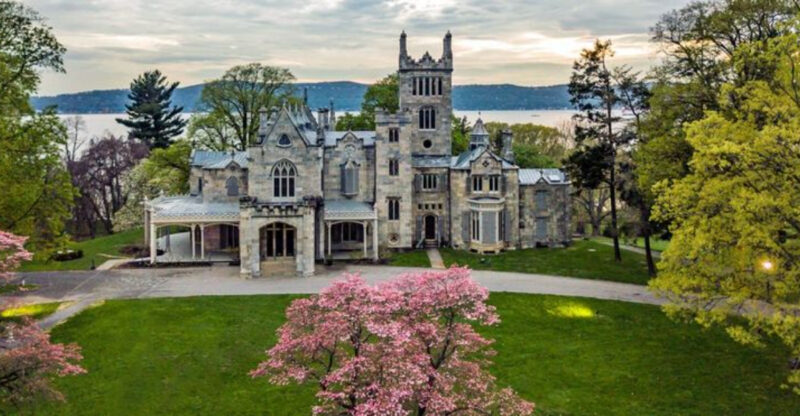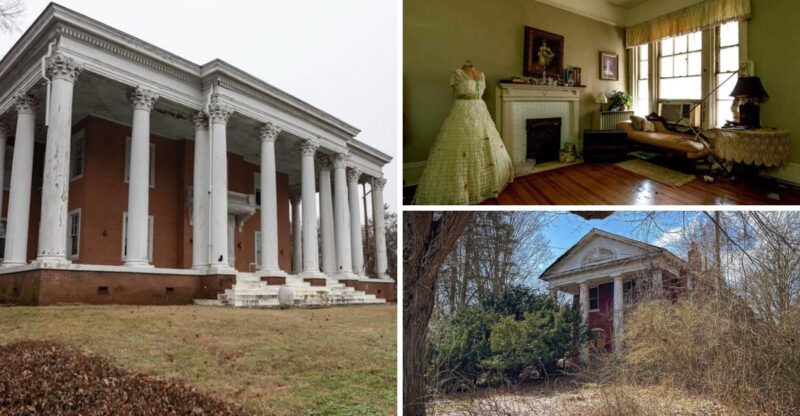12 Palm Springs Mid-Century Homes That Still Feel Modern And Fresh
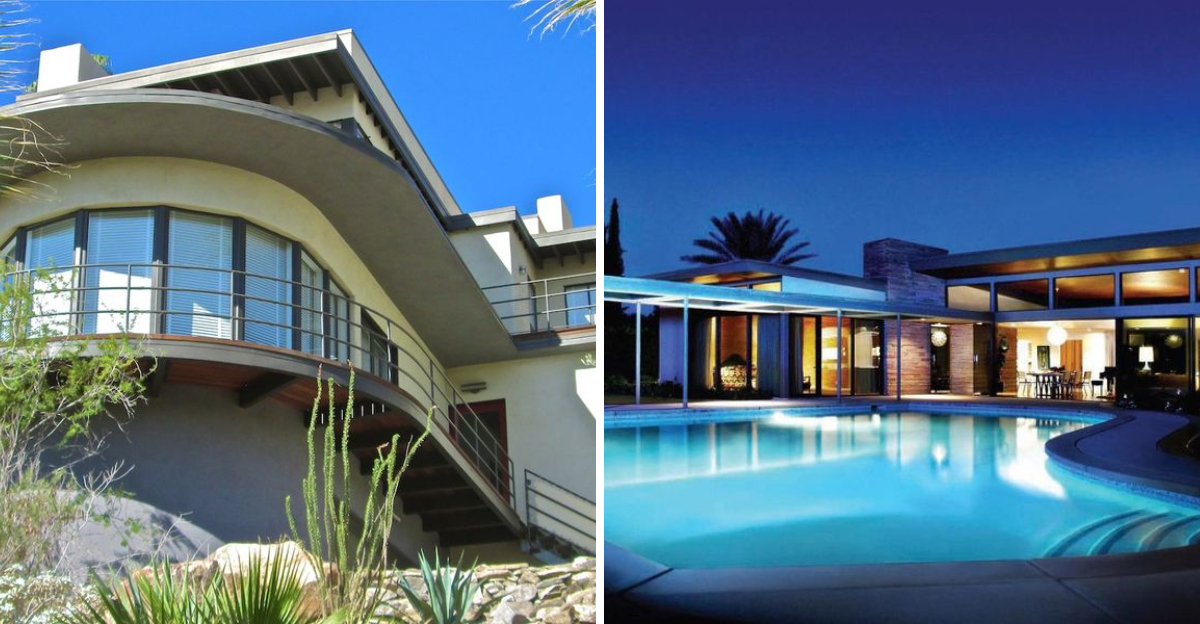
Palm Springs stands as a treasure trove of mid-century architectural gems that have withstood the test of time. These homes, designed between the 1940s and 1970s, showcase clean lines, indoor-outdoor living, and innovative use of materials that feel remarkably current. I’ve explored this desert oasis extensively, and these 12 mid-century marvels continue to influence today’s design trends with their timeless appeal and forward-thinking features.
1. The Kaufmann Desert House
Richard Neutra’s 1946 masterpiece still makes my jaw drop every time I visit! Those floor-to-ceiling windows create this magical floating effect that modern architects keep trying to replicate.
The way sunlight plays across the stone walls throughout the day is absolutely mesmerizing. I’m particularly obsessed with how the swimming pool reflects the mountains; it’s like having nature’s artwork constantly changing in your backyard.
Fun fact: Julius Shulman’s iconic photograph of this house helped define California modernism for generations to come!
2. Frey House II
Perched dramatically on the slopes of San Jacinto Mountain, Albert Frey’s personal home practically hugs the landscape! The architect actually incorporated a massive boulder into the interior design; talk about bringing the outdoors in.
What strikes me most is how the compact 800-square-foot space feels so expansive thanks to the panoramic views. The corrugated aluminum roof still looks futuristic despite being designed in 1964.
I adore how the yellow fiberglass bathroom panels glow like a desert sunrise when lit from within at night.
3. The Elvis Honeymoon Hideaway
Stepping into this 1960 Robert Alexander creation feels like time-traveling to the grooviest cocktail party ever! The curved walls and circular rooms create this incredible flow that modern open-concept homes still strive for.
Elvis and Priscilla’s brief residency adds star-studded charm, but the architecture itself steals the show. Those concentric circles visible from above remind me of ripples in a pond; pure genius!
The terrazzo floors still sparkle like they were poured yesterday, proving quality craftsmanship truly stands the test of time.
4. Edris House
E. Stewart Williams designed this 1954 stunner to look like it sprouted organically from the desert floor! Unlike many white-box modernist homes, the warm wood ceilings and local stone walls create this cozy vibe that still feels revolutionary.
Walking through, I’m always struck by how the angled roofline perfectly frames the mountain views. The way indoor and outdoor spaces blend seamlessly makes modern McMansions look downright clumsy by comparison.
My designer friends go absolutely wild for the original built-in furniture that maximizes every square inch without feeling cramped.
5. The Elrod House
John Lautner’s 1968 concrete masterpiece rocketed to fame in “Diamonds Are Forever,” and honestly, it’s still more futuristic than most 2023 luxury homes! That massive circular living room with the retractable glass walls makes my heart skip a beat every single time.
The way Lautner incorporated those massive boulders into the structure feels almost alien; like the house emerged from another dimension. I’m particularly obsessed with how the concrete dome ceiling creates these dramatic shadows throughout the day.
The swimming pool that extends from indoors to outdoors? Pure genius that high-end architects still copy today!
6. Twin Palms
Frank Sinatra’s first Palm Springs home still oozes that Rat Pack cool factor that designers desperately try to bottle today! E. Stewart Williams created this 1947 beauty with a now-iconic piano-shaped pool that photographers can’t resist.
The floating staircase and stone fireplace wall remain absolutely stunning architectural elements. What really gets me excited is how the clerestory windows allow desert light to dance across the interior spaces without overheating the rooms.
Legend has it Sinatra would hoist a Jack Daniel’s flag to signal neighbors that cocktail hour had begun; now that’s indoor-outdoor living with style!
7. The Loewy House
Industrial designer Raymond Loewy’s 1947 desert retreat showcases Albert Frey’s genius for maximizing tiny spaces! At just 1,100 square feet, this compact jewel proves bigger isn’t always better; a lesson today’s bloated McMansions could certainly learn.
The swimming pool practically laps against the sliding glass doors, creating this magical effect where water reflects rippling patterns onto the ceiling. I’m particularly obsessed with the built-in aluminum shelving system that somehow looks more contemporary than anything at Design Within Reach.
The way the roof extends into that dramatic overhang provides crucial shade while creating gorgeous shadow patterns across the facade.
8. The Alexander Glass House
Walking into this stunning William Krisel design always reminds me why the Alexander Construction Company’s homes remain so coveted today! That dramatic butterfly roof isn’t just for show; it brilliantly channels rainwater while creating higher ceilings and better ventilation.
I absolutely adore how the clerestory windows beneath the roof’s peak flood the interiors with light without sacrificing privacy. The original terrazzo floors have developed this beautiful patina that new construction simply can’t replicate.
My clients constantly ask me to recreate the indoor-outdoor flow that this 1960s gem perfected decades before it became a buzzword!
9. The Ship of the Desert
This nautical-inspired 1936 marvel by Wilson & Webster predates classic mid-century modern but influenced everything that followed! The curved white stucco exterior genuinely resembles a luxury ocean liner cruising through the desert landscape.
After a meticulous restoration, the porthole windows and ship deck-style balconies look as fresh as they did nearly a century ago. What blows my mind is how the rounded corners and streamlined details anticipated minimalist trends that wouldn’t become mainstream for decades.
I’m particularly fond of the rooftop deck that offers 360-degree mountain views; truly ahead of its time!
10. The Donald Wexler Steel House
Donald Wexler’s experimental steel homes from 1962 look more contemporary than most architectural designs hitting magazines today! These prefabricated marvels were assembled on-site in just days; an efficiency modern builders still struggle to achieve.
The restored #4 steel house showcases how the folded plate roof creates this gorgeous play of light throughout the day. I’m absolutely obsessed with how the floor-to-ceiling glass walls frame the desert landscape like living artwork.
Most impressive? The steel construction has weathered six decades of extreme desert temperatures while maintaining its structural integrity; try finding that quality in today’s quick-build homes!
11. The Koerner House
E. Stewart Williams fused mid-century modernism with subtle Japanese aesthetics in this 1955 gem, creating spaces that feel timeless! The low-slung profile nestles perfectly into the landscape, demonstrating Williams’ genius for site-specific design.
Walking through the meticulously preserved interiors, I’m always struck by how the clerestory windows create this ethereal glow without sacrificing privacy. The original mahogany paneling has developed a rich patina that new construction simply cannot duplicate.
My favorite feature? The Japanese-inspired garden courtyard that creates a microclimate significantly cooler than the surrounding desert; brilliant passive cooling before it was trendy!
12. The Cody Glass House
William Cody’s 1967 masterpiece still teaches contemporary architects how to blend interior and exterior spaces seamlessly! The way the glass walls completely retract creates this magical disappearing act between living room and pool deck.
I’m particularly enchanted by how Cody designed the ceiling to extend beyond the glass walls, creating essential shade while visually expanding the interior. The original terrazzo floors flow uninterrupted from inside to outside; a detail that still feels revolutionary.
The restored kitchen with its floating cabinetry and hidden appliances looks more contemporary than most high-end renovations I see on Instagram today!

